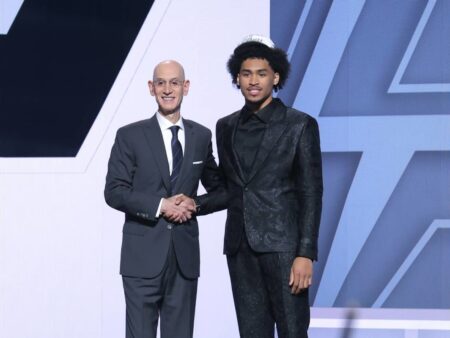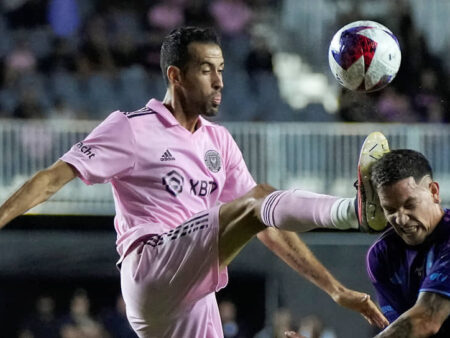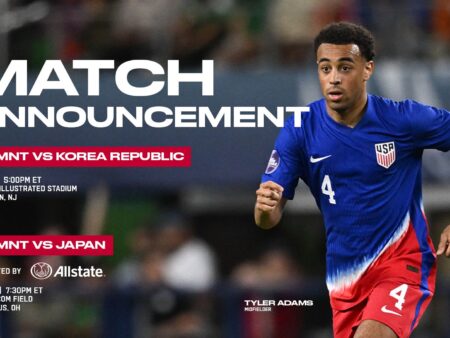The National Women`s Soccer League (NWSL) has formally submitted an application to U.S. Soccer to establish a Division II league, with plans to begin play in 2026. This initiative is intended to bolster player development and represents a significant step in the evolution of lower-tier professional women`s soccer in the United States.
Documents reveal the application was filed on April 1st, accompanied by a detailed letter from NWSL Commissioner Jessica Berman addressed to U.S. Soccer CEO and secretary general JT Batson. In the letter, Berman drew a parallel between the proposed Division II structure and the minor league system in baseball, emphasizing the critical need for the NWSL to build a strong talent pipeline to support the growth of the existing Division I league. The envisioned Division II serves as a crucial intermediate stage between collegiate soccer and the professional ranks, offering young athletes valuable exposure to the technical, tactical, and mental rigors of top-level play.
Eight teams affiliated with current NWSL Division I clubs are slated to participate in the inaugural Division II season. These include teams tied to Bay FC, Kansas City Current, North Carolina Courage, NJ/NY Gotham FC, Orlando Pride, Racing Louisville, Seattle Reign, and the Washington Spirit. These second-tier teams are expected to utilize the same home stadiums as their senior counterparts and will compete in a standard double round-robin league format, playing each opponent twice. The regular season will consist of 14 games, culminating in a playoff system featuring semi-finals (1st vs. 4th, 2nd vs. 3rd) and a championship match.
In a statement confirming the submission, the league highlighted its commitment as a leader in women`s soccer to meaningful growth. The NWSL underscored the rising demand for professional soccer and expressed anticipation for working towards creating a solid foundation for future generations of players, officials, and coaches, thereby ensuring the ongoing progress of the women`s game.
By involving existing NWSL clubs, the proposed Division II league readily fulfills or surpasses many of U.S. Soccer`s licensing criteria. The federation mandates a minimum of six teams in the first year and eight by the third year, with at least half located in metropolitan areas exceeding a population of 500,000 and stadiums having a capacity of at least 2,000. All eight teams currently listed for the NWSL`s Division II debut season meet these population and stadium requirements.
Within the first four years, all NWSL Division I teams are expected to establish an affiliated second-tier squad. By this point, the NWSL is projected to have at least 16 teams, including the expansion teams in Boston and Denver set to join the Division I league next year. The Division II league will also be open to participation from teams currently unaffiliated with the NWSL at a later stage.
This second tier is also designed to provide clubs with opportunities to build roster depth, especially following the abolition of the college draft. It will serve as a structured pathway for player development and a space for injured players to participate in rehabilitation games before rejoining the Division I team. Similarly, it offers a platform for coaches, referees, and front office personnel to hone their skills. The NWSL also views the Division II league as an experimental environment for creative marketing initiatives aimed at expanding the women`s game`s fanbase.
Furthermore, these second-division teams would have the ability to engage in international exhibition matches against clubs from other leagues and could potentially qualify for and participate in international tournaments.
The Evolving Women`s Soccer Landscape
The Division II league model functions akin to a reserve league, a concept common across various sports. The NWSL referenced baseball, but similar structures exist in soccer, such as MLS Next Pro (a third-tier league focused on youth for many MLS teams) and the reserve teams used by many European clubs playing in lower divisions.
While developing prospects through lower leagues is a long-standing practice in global sports, it has been less prevalent in women`s sports due to historical underinvestment. Currently, there is no officially sanctioned Division II women`s soccer league in the U.S. However, the WPSL Pro recently announced its own plans to launch as a Division II league, also aiming for a 2026 start. WPSL Pro is backed by the Women`s Professional Soccer League, an amateur organization, and gained new support from Cleveland Soccer Group. WPSL Pro is also seeking sanctioning from U.S. Soccer and could potentially operate as a rival league to the NWSL`s Division II proposal if both receive approval. It is not unprecedented for U.S. Soccer to sanction multiple leagues within the same division.
Focus on Youth Development
Propelled by increased attention and investment, the NWSL is currently undergoing a period of rapid expansion and development. This momentum has facilitated significant changes, including adjustments to player recruitment rules like an increase in international roster spots and the elimination of the college draft. The availability of resources now allows the league and its teams to address long-standing challenges related to player development, an area Commissioner Berman highlighted in January.
Commissioner Berman noted that the resources available to clubs are enabling more sophisticated scouting processes, fostering crucial discussions at the board level about investing in the “path to pro.” She described this as the “next chapter” for the league`s growth, emphasizing that moving away from the draft model necessitates strengthening the foundation for bringing talent into the league. Berman believes the U.S. possesses an immense talent pool and sees a significant opportunity to leverage this initiative as a catalyst for investment in youth soccer.
Various stakeholders across the women`s soccer landscape have shown increased interest in ensuring avenues for young players to turn professional. This includes U.S. women`s national team head coach Emma Hayes, who has begun utilizing the U-23 team as a reserve squad for the senior team, and notably, Michele Kang, owner of the Washington Spirit, who made a substantial donation to U.S. Soccer specifically for girls` and women`s programs.









